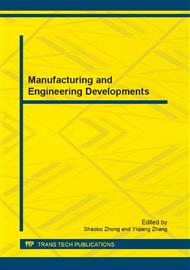p.162
p.167
p.175
p.180
p.184
p.188
p.193
p.198
p.203
Research of the Seismic Wave Data Processing Based on the Wavelet Transform
Abstract:
Seismic exploration is a effective methods to ascertain underground structure and looking for oil. As the data collected in the wild are often subjected to the interference of noise, is not conducive to the analysis and interpretation of seismic data, therefore removing noise is the premise of data interpretation. To use the Fourier transform and wavelet analysis denoising a synthetic seismogram in this paper, by comparing denoising results, wavelet soft threshold denoising waveform is smooth, and it can better reconstruction original waveform.
Info:
Periodical:
Pages:
184-187
Citation:
Online since:
January 2013
Authors:
Price:
Сopyright:
© 2013 Trans Tech Publications Ltd. All Rights Reserved
Share:
Citation:


